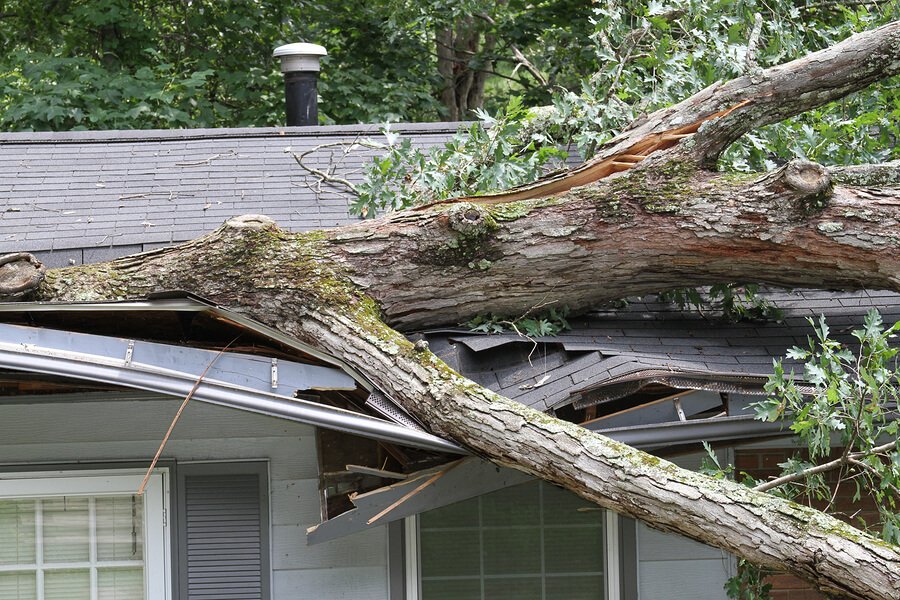
Trees can be a stunning feature in any yard. Having one that is both mature and healthy adds a touch of elegance and charm to your property. When in season, the lush foliage of a mature tree brings natural, vibrant colour to your yard. But most importantly, its heavy branches provide a beautiful venue for lazy afternoons spent with friends and family.
With all of that in mind, it is understandable that removing such a tree from your property can be a difficult and sometimes painful decision. But the truth is that certain factors can make it an absolute necessity. So how will you know that the time has come to remove a tree from your yard? The answer to this comes down to the safety factor.
The older a tree is, the more likely it is to become susceptible to disease or grow brittle. This means that high wind conditions could result in branches snapping off or the whole tree falling over. And that equals possible injury or expensive damage to your property, or a neighbours’.
There are also strict local statutes regarding tree removal, so it is not a decision to make lightly. But if your trees are showing any of the following signs, contact Wolf Trees to find out more.
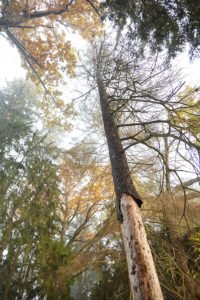

Dropping branches for no apparent reason
Dead branches are one sign of trouble that is easy to spot, especially when the tree should be sporting lush foliage in spring or summer. Dead branches will be those carrying brown withered leaves or else no leaves at all. Eventually, they can even lose their bark. Over time these branches become weak and brittle, making it likely they will give way, particularly during stormy conditions.
If you spot any dead branches on your tree, then consider their size, weight and condition. If the branch falling could damage property or hurt someone, then it is wise to call an arborist to remove it immediately. A dead or broken branch can also indicate decay that may have spread to other parts of your tree, meaning it will probably fall at some point in the future.
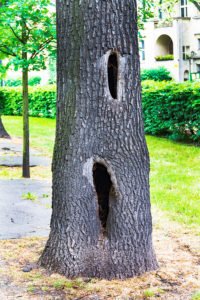

Too many deep cracks in the trunk
Some trees develop seasonal cracks in the surface of their trunks; however, these are usually not a problem. The health of a tree’s trunk is a good indicator of the overall wellbeing of a tree though, so you should keep an eye out for deeper splits, cracks and cavities that may develop over time. While these may not mean anything, they are usually a sign of more serious issues. These issues can include unstable soil and rot or damage causing weakness in the trunk.
An expert should assess any indentation that goes deeper than the bark as soon as possible. Not only could it be a sign of poor structural integrity, but they may also house bacteria and fungi. These can have a negative impact as they may eat away at the wood and eventually hollow the tree out.
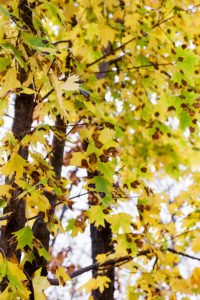

The tree appears unhealthy or damaged
Another sign of an unsafe tree is if it looks like it is unhealthy. Luckily, this doesn’t require an expert opinion as it is usually not too difficult to spot. Symptoms that a tree is not well can include a number of things, but the most noticeable is if the tree has grown into an unusual shape or shows stunted growth. Another obvious indication is the condition of the leaves on a tree, or out of season leaf loss.
Thinning leaves, leaves that are drying out, losing leaves in an outside-in pattern and strange colouring or spots on leaves are all telling signs that there could be a more serious problem. There could be any number of reasons for these things occurring but the most common are infestations of pests, problems with the soil and tree diseases. You may be able to save the tree in some cases, so always get a professional opinion before committing to felling your tree.
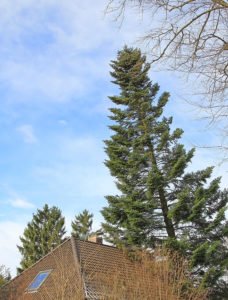

Your tree has suddenly shifted or started leaning over
It might not surprise you to learn that not all trees growing at an angle are unsafe. For some, this is a natural occurrence related to their position. What is a bad sign is if a tree that previously stood straight suddenly starts to lean over – especially if that lean increases over a short period of time. When a tree shifts all of a sudden, it is a strong indication that there may be problems with its root systems. And, as roots are vital to a trees’ overall health and stability, that is a serious problem.
Unfortunately, the roots are underground and you can’t inspect them. But there are signs you can watch for. One is cracking of the soil around the roots, and the more dramatic the cracking, the more serious the problem. Another sign of root problems is the appearance of dark, musty areas at a tree trunk’s base, especially if there are also mushrooms growing in these areas. This fungal growth can point to roots that have rotted, and these weakened roots may not be strong enough to hold the tree upright during heavy storms or winds.
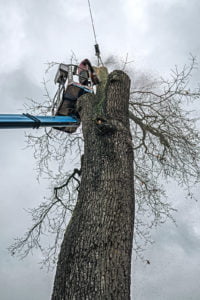

Your tree is too close to manmade structures
One common reason for removing a tree that is otherwise completely healthy is when it is too close to manmade structures. It may be that it has grown so tall that overhead power lines become a potential fire hazard. It could be that the root system of a tree has started growing into or damaging service lines to your property, or even the foundation of your house. You could want to create more space in your yard.
While these issues may require nothing more than a proper pruning or trim, they are something to keep in mind. Assessing the likelihood of any trees becoming a problem in the future allows you to take steps before that happens. And could save your tree in the long run!
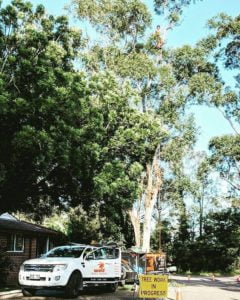

Tree removal costs and local regulations
Remember that some trees enjoy protected status from your local council. However, you may get approval to remove a tree that is protected either by a TPO or LEP for any of the reasons listed above as well as several others.
Another thing to keep in mind is that the council may include restrictions when granting approval for you to remove a tree. And, as breaching the terms of a TPO can result in a penalty in the region of $110,000, you wouldn’t want to disobey it!
Not only are there local regulations to take into consideration, but there are also the costs involved.
Some things that can affect costs are:
- The level of difficulty involved in the removal,
- How easy it is to access the tree,
- What precautions are needed to remove it safely.
If you’re thinking about removing a tree from your property, we’d love to hear from you. Wolf Trees are fully insured and qualified, and we offer fast and free quotes – so please contact us today!

Social